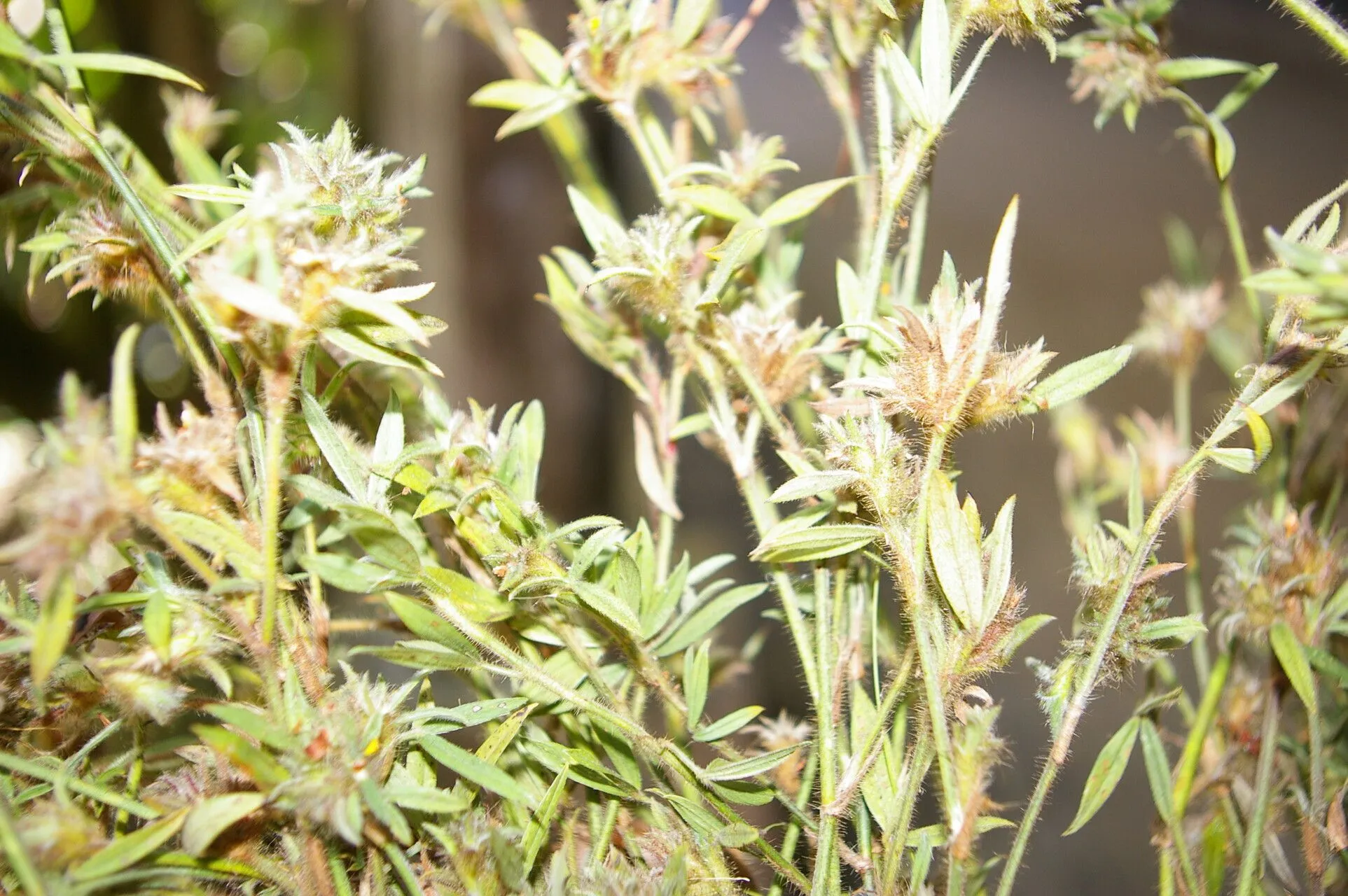
Author: (Aubl.) Sw.
Bibliography: Kongl. Vetensk. Acad. Handl. 1789: 296 (1789)
Year: 1789
Status: accepted
Rank: species
Genus: Stylosanthes
Vegetable: False
Observations: Mexico to S. Trop. America
Stylo, scientifically known as Stylosanthes guianensis, is a plant endemic to regions spanning from Mexico to Southern Tropical America. It belongs to the Fabaceae family, a large and economically important family of flowering plants commonly referred to as legumes. This plant has garnered attention not only for its agricultural applications but also for its adaptability to various environmental conditions.
Stylosanthes guianensis is characterized by its robust nature and ability to improve soil fertility through nitrogen fixation—a common trait within the legume family. Its presence is particularly beneficial in tropical agriculture where it is often used as a cover crop or for pasture improvement. The adaptability of Stylo to different soils and climates makes it a valuable resource for sustainable farming practices.
The physical characteristics of Stylosanthes guianensis include a deep root system, which enables it to withstand drought conditions. Its leaves are trifoliate, typically arranged in a manner that optimizes photosynthesis and water conservation. The plant produces small, pea-like flowers that contribute to its reproductive success and spread across its native and introduced ranges.
Historically, the plant was first described in the late 18th century and documented in the publication “Kongl. Vetensk. Acad. Handl. 1789.” The botanist (Aubl.) Sw. is credited with its scientific classification and early observations. Since then, it has been the subject of numerous agricultural studies aimed at exploring its utility in enhancing crop yields and preventing soil erosion.
In summary, Stylo, or Stylosanthes guianensis, plays a vital role in tropical agriculture due to its nitrogen-fixing capabilities, resilience, and adaptability. Its documented history and widespread presence from Mexico to Southern Tropical America highlight its importance and potential in sustainable farming and ecological conservation.
Eng: pencil flower, stylo
En: Stylo, Common Stylo, Oxley Stylo, Brazilian Pencil-Flower, Pencil flower, Brazilian Lucerne
Af: Gewone stylo
Zh: Gui ya na bi hua dou
Fr: Luzerne du Brésil
Es: Alfalfa do Noroeste, Estilomeladinho
© copyright of the Board of Trustees of the Royal Botanic Gardens, Kew.
© copyright of the Board of Trustees of the Royal Botanic Gardens, Kew.
© copyright of the Board of Trustees of the Royal Botanic Gardens, Kew.
Taken Feb 17, 2015 by Nelson Zamora Villalobos (cc-by-nc)
Taken Jul 26, 2022 by nicoplant (cc-by-sa)
Taken Nov 18, 2014 by Tela Botanica − Liliane Roubaudi (cc-by-sa)
Taken Nov 18, 2014 by Tela Botanica − Liliane Roubaudi (cc-by-sa)
Taken Nov 18, 2014 by Tela Botanica − Liliane Roubaudi (cc-by-sa)
Taken Feb 17, 2015 by Nelson Zamora Villalobos (cc-by-nc)
Taken Jul 3, 2022 by Birgitta Tittel (cc-by-sa)
Taken Jul 29, 2010 by OTS – Oviedo-Brenes, Federico (cc-by-nc-sa)
Taken Aug 1, 2020 by Salahaudin Maili (cc-by-sa)
Taken Nov 27, 2021 by Margaret Bassey (cc-by-sa)
Taken Nov 6, 2021 by pierre vernet (cc-by-sa)
Taken May 1, 2022 by Ana Gonztuttle (cc-by-sa)
Taken Aug 29, 2022 by Srivishnu J B (cc-by-sa)
Taken Dec 31, 2021 by Margaret Bassey (cc-by-sa)
Taken Oct 1, 2009 by OTS – Oviedo-Brenes, Federico (cc-by-nc-sa)
Taken Jul 22, 2012 by Tela Botanica − Liliane Roubaudi (cc-by-sa)
Taken Nov 18, 2014 by Tela Botanica − Liliane Roubaudi (cc-by-sa)
Taken Nov 6, 2021 by pierre vernet (cc-by-sa)
Taken Jul 29, 2010 by OTS – Oviedo-Brenes, Federico (cc-by-nc-sa)
Taken Jul 29, 2010 by OTS – Oviedo-Brenes, Federico (cc-by-nc-sa)
Taken Oct 1, 2009 by OTS – Oviedo-Brenes, Federico (cc-by-nc-sa)
Taken Jul 29, 2010 by OTS – Oviedo-Brenes, Federico (cc-by-nc-sa)
Taken Oct 1, 2009 by OTS – Oviedo-Brenes, Federico (cc-by-nc-sa)
Taken Jul 29, 2010 by OTS – Oviedo-Brenes, Federico (cc-by-nc-sa)
Family: Myrtaceae Author: (F.Muell.) K.D.Hill & L.A.S.Johnson Bibliography: Telopea 6: 402 (1995) Year: 1995 Status:…
Family: Rubiaceae Author: Pierre ex A.Froehner Bibliography: Notizbl. Bot. Gart. Berlin-Dahlem 1: 237 (1897) Year:…
Family: Sapindaceae Author: Koidz. Bibliography: J. Coll. Sci. Imp. Univ. Tokyo 32(1): 38 (1911) Year:…
Family: Asteraceae Author: A.Gray Bibliography: Pacif. Railr. Rep.: 107 (1857) Year: 1857 Status: accepted Rank:…
Family: Fabaceae Author: Medik. Bibliography: Vorles. Churpfälz. Phys.-Ökon. Ges. 2: 398 (1787) Year: 1787 Status:…
Family: Aspleniaceae Author: (Cav.) Alston Bibliography: Bull. Misc. Inform. Kew 1932: 309 (1932) Year: 1932…